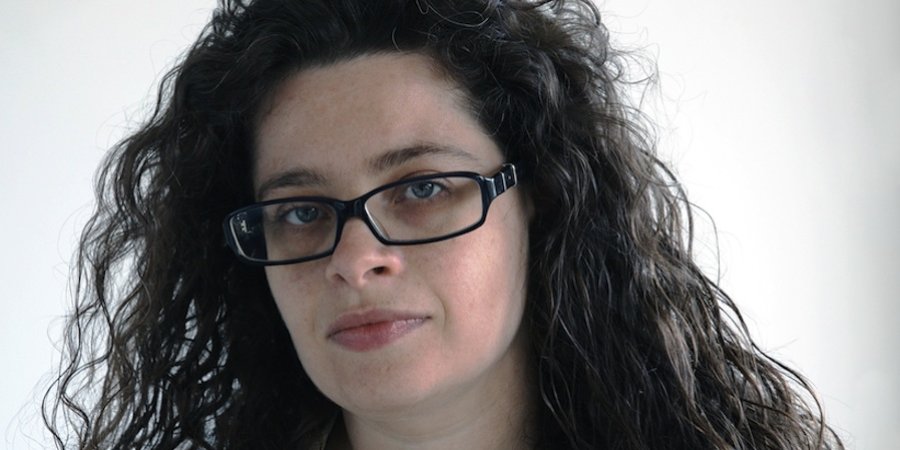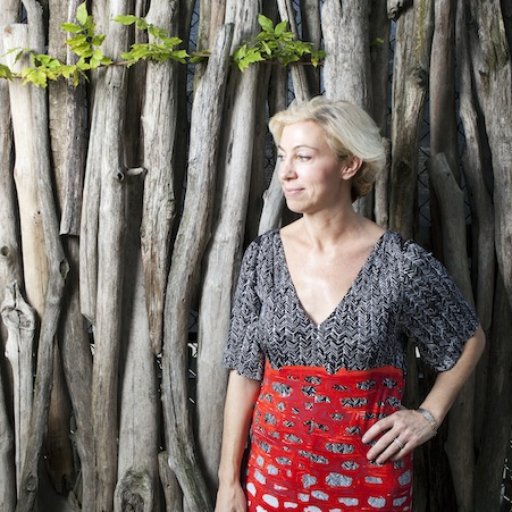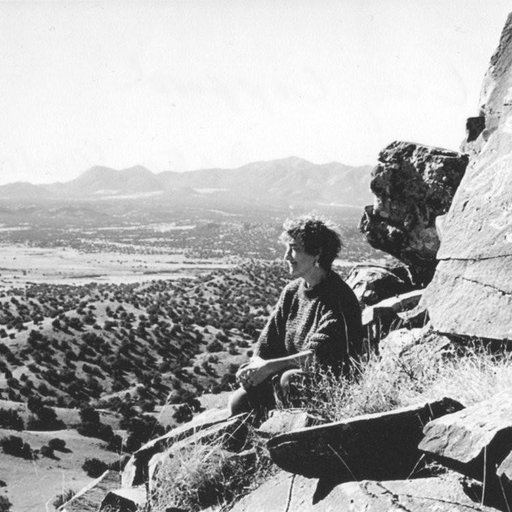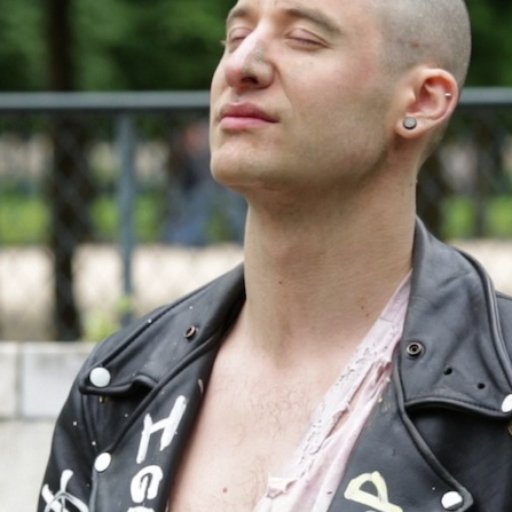This week the Frieze Art Fair is returning to New York City's Randall's Island for its third edition, bringing contemporary artworks from around the world into its resplendent million-dollar tent (which this year looks poised for some aggressive weather-testing, if the stormy forecasts are correct). Once again, there will be the nearly 200 booths of wares from international galleries and nonprofits. Once again, there will be the sequence of Frieze Projects artworks organized and commissioned by curator Cecilia Alemani. Once again, it will have a series of talks, though a vastly improved one this year. And, yes, once again, it will have delicious food served by the pop-up satellites of hip New York restaurants that you'll never be able to score a reservation at otherwise.
But what's most interesting, perhaps, about Frieze New York is the way it has joined other art fairs like the Armory Show and the Art Basels in becoming tentpole cultural events that reach far beyond the art world, sending ripples through myriad other disciplines and commanding media attention far beyond that of your average trade show. To explore why that is, how the phenomenon operates, and what further potential art fairs possess, Artspace editor-in-chief Andrew M. Goldstein spoke to Frieze co-founder Amanda Sharp, the former editor who created Frieze magazine with Matthew Slotover in 1991 and then used it as a platform to launch the world's pre-eminent curated blue-chip fair.
Clearly, the nature of what an art fair is has been morphing and expanding in recent years, transitioning from an elite trade show to become a celebratory cultural event more akin to a World's Fair, where aesthetic innovations are showcased. What role would you say an art fair like Frieze New York plays in the broader culture today?
What Frieze has always been, from the magazine to the fairs, is a place where fine art meets the other arts, or other aspects of the cultural conversation. So to do a fair, right from the get-go it was super important to us to be able to reach out to broader audiences by showing the part where art kisses these other areas. You're bringing so many people together under a roof that you have a great opportunity to turn that into a place where things happen, and where commerce is very successful, and that was always our goal.
That’s why when we started out with the fair, the first person we brought on was Polly Staple, the first curator of our monstrosity in London. She spent about a year thinking about the context of a fair—how it can be used as a platform, how it can integrate a city, how you can turn a fair from a passive into an interactive experience, and how people can take it and make it their own. That was at the forefront of her thinking. Now, looking back, we felt that we have always done things that are ambitious and in line with the interests of the publication and what people are talking about within contemporary art.
Speaking of your magazine, the fair's talks program this year is exceptionally excellent, with Tom Eccles, director of Bard's Hessel Museum, assembling stellar match-ups of artists, thinkers, and writers. In quality, it's reminiscent of the New Yorker Festival—and, in fact, you've even got David Remnick doing a talk, with the two former members of Pussy Riot. Why put so much emphasis on talks?
In New York there are so many talks every day and they’re done so well that when you do them you want to be able to add value to the culture of the city, and I think we’ve gone and put our head a bit more across the parapet this year, very deliberately bringing in elements that will interest people beyond the art world. We're feeling confident in what we're doing through the rest of the program. In an ideal world what you would do with an art fair in a major art capital is to lure more people in to look at contemporary art, because we love art. That’s what we do and that’s why we get up in the morning, and we want to expand our audience because we simply believe that it’s a value to people's lives. An art fair can do that. It's sexy, adventurous, spectacular, and it works very well as an environment for spectators and galleries alike.
What do you think it is about art that makes it such a great connector for bringing other modes of culture together, from food to music to literature to cinema to fashion to, well, you name it? The only other cultural event that has close to as many nodules might be Cannes, but I'm not sure if that has the same explosion of culture you see around something like Art Basel Miami Beach.
Here is an immediate thought. I think artists are people who don’t edit their interests—they’re almost automatic in constantly picking up on whatever else is going on in the world—and therefore what they make is often a new response or twist to something in another discipline. If that’s true, then art is something that is permeable with the rest of the world, and it expands out from there because the artist is the engine of the art world as a whole. It's really all about new ideas and innovation, so everything is up for grabs. People think of contemporary art as something really closed, but if, at its heart, it isn’t, it becomes really interesting.
In that case, who do you think of as the fair's audience? Not just collectors?
The primary audience of the fair, if I’m honest, is going to be people with an established interest in contemporary art, especially collectors, curators, artists. Then you have these other audiences that we welcome and enjoy—people who come here because they might go to MoMA or the Met on a day off from work and they want to learn a bit more about what’s going on in contemporary art. That's a sort of generally engaged cultural audience.
Then you have the kids, and I always love the kids—they're our future. So there’s a lot of outreach in education from the fair, which is an important aspect of what we do as well, because it isn't just elitist—we want art to reach new people, not just as a fair, but also possibly as a career. I think there are lots of different audiences for this. The trick is how you make them complimentary so they can all exist happily in one ecosystem.
What percentage of the people who come to the fair are actually collectors who are there to make a purchase, or who can be expected to potentially make a purchase?
This is only based on market research that we did many years ago in London, and it may be different in New York, but the number we came up with was about 15 percent. I think last year we had 45,000 people come in New York in total, so if that's the right figure that's pretty great.
One thing I'm curious about is that fairs—and not just Frieze but also some of the other large multinational fairs, like Art Basel—have large non-collecting audiences coming in that stand to be, in a word, monetized. I wonder what are some of the ways that, in addition to educating and entertaining and inspiring these other audiences, Frieze could create new revenue streams beyond tickets sales and selling booths to galleries.
Well, we don’t have very refined income streams; there’s a lot of opportunity there if someone gave it a thought. But at the moment we run on bread-and-butter ticket sales and sponsorship—we're not hospitality agents, we're not creating travel packages. But I think you're right that there are many others comparable trade events outside of the art world that are quite advanced in that area.
To get to the art, this year's Whitney Biennial has hundreds of artworks by 103 artists selected by three curators, filling the building with so much work that the viewer is free to piece together their own thematic strands instead of following an imposed curatorial theme. This strikes me as very similar to the art-fair context, where visitors can let their own tastes lead them from work to work without thinking about any kind of curatorial construct. It's liberating, and, contrary to a lot of complaints about art fairs, a great way to see a lot of new art. How do you see a fair like Frieze, which bills itself as a curated fair, relating to a big group show like the Whitney Biennial?
I’m going to give you my simplest response to that, and you're going to flabbergasted by how simple it is: if you are walking through a museum exhibition, you're going to find an independent show organized by a curator where the art is not necessarily available for purchase—you're basically going to a show, and it's an intellectual, emotional engagement that doesn't involve a financial transaction. When you walk into an art fair, the simple fact is that if it’s on the wall, you can buy it. In terms of the information you can glean, however, then it becomes a more complex relationship, because galleries use fairs as marketing tools as much as sales tools. So you can get as much insight into an artist's work from a booth presentation at a fair as you could in a gallery show, or even a small museum show.
The hierarchy within our art world is that, in theory, the museum stands as the most elevated context, that one trusts to the nth degree. In an art fair we know that these galleries are presenting projects in the interest of the artists, so there is no independent aspect to it. However, if you want to learn about art, and you want to see lots of art, and you want to have an enjoyable experience with art, then you can do that within the fair context.
With booths capable of performing a show-like function for artists, and with art fairs generating up to 70 percent of revenue for galleries, one must imagine that there's a temptation for some dealers to dispense with expensive brick-and-mortar galleries spaces and instead just bring their wares from fair to fair. Is this something you see happening anywhere, or could imagine happening?
I’m not going to name who it was, but I remember in the mid-'90s there was a very small gallery that had the tiniest space you could imagine, and they made massive sales all around the world in art fairs—it was this brilliant smoke-and-mirrors kind of strategy to build the identity of this gallery. It was pretty extraordinary at the time, though I don't see that being done much anymore. I don’t have a crystal ball about how the art world can change, of course, so there's a possibility this could become more widespread.
It would be very sad to me if that were to happen, because what I love about galleries in large part is their commitment to artists and the way that they run their shows. It's just fantastic, and I think that if what you learned at an art fair was the only thing you learned about art, then that would be a diminished experience. It's not only ideal but necessary to have more contact, so I really hope that isn’t the future because galleries have a really important role for people that experience contemporary art.
In such a scenario, one of the things that would be lost would be the ability for artists to have their work displayed in solo or group shows for long enough periods of time for people to come and see it and for critics to write about it. Art fairs are up for such brief periods of time that if you miss the four-day window you're out of luck, and while critics occasionally do review fairs, they don't bestow reviews on individual booths.
Yeah, I mean, you’ve had single booths be very impactful for artists, like when Tino Sehgal did that piece in London in 2003 and suddenly he was on everyone’s radar where before his name was not very familiar. So I definitely feel that a presentation in a booth can be very notable, and can have people talking about it for a while afterwards. But I don’t really know what critics feel they are doing when they review a fair—with art-market journalists, it's clear what their role is. So, yeah, I think that’s an interesting question.
Would Frieze magazine ever consider reviewing a booth at a fair, to put the question to you?
You’d have to ask the editors.
One interesting thing about art fairs and their organization of images in a nonhierarchical, flattened display is that walking through a fair has many parallels to surfing images on the Web—it's a very internet-era experience, in some ways, attuned to new modes of visuality. And it's tailor-made for Instagram, for instance. How is Frieze embracing the potential of the Internet when it comes to enhancing the fair experience?
That’s a very good question. I guess for us it's an opportunity to expand the audience. This year our education programs are integrating social-media feeds on Facebook and Twitter together with the family guides that are handed to kids when they enter the fair in an effort to spark feedback and conversation, and I think that will be pretty potent. People can use that as a medium to express their response to the show, and I think that it could probably become a useful sales tool for galleries if they employed it more than they do at the moment.
I think with anything that one does nowadays, social media is a component of it—it has to be naturally integrated, and any change to the mixture could present really exciting opportunities here. Where you still struggle, perhaps, is that you need to have the "aura" of the artwork as a critical part of the experience—a large part of the fair is seeing them in real life to really get it. But you can experience a compelling facsimile through social media.
In view of all of these currents, what do you envision the Frieze Art Fair looking like 10 years from now?
I would be surprised if it wasn't a more interactive space, because I think the way people are growing up now broadens the spectrum of what people value and what they're interested in, in part because of the technological improvements in the way we communicate. I think that's going to start coming through in the work you see in fairs. My gut feeling is that the fair will become a more permeable platform, and a more interactive platform somehow. I also think we're going to be collapsing the distinctions between historical periods more. I don’t know how that will play out in a contemporary art fair, but it wouldn’t surprise me if we became less constrained by definitions of the kinds of art we show, and there were more room to play around with them.



























